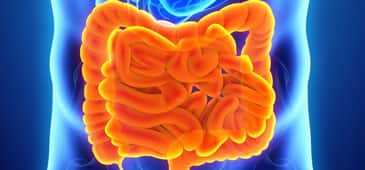
What's Hot
What's Hot
News flashes are posted here frequently to keep you up-to-date with the latest advances in health and longevity. We have an unparalleled track record of breaking stories about life extension advances.
Diminished vitamin D levels predict cognitive decline in seniors
 July 29 2016. On July 12, 2016, the Journal of Gerontology Series A reported the outcome of a study conducted by Duke University researchers which found a higher risk of cognitive decline among older individuals with decreased vitamin D levels.
July 29 2016. On July 12, 2016, the Journal of Gerontology Series A reported the outcome of a study conducted by Duke University researchers which found a higher risk of cognitive decline among older individuals with decreased vitamin D levels.
The study included 1,202 Chinese men and women aged 60 years and older who were cognitively normal upon enrollment in the Chinese Longitudinal Health Longevity Survey. Blood samples were analyzed for vitamin D at the beginning of the study. Cognitive testing was conducted at baseline and over the following two years.
Among those whose vitamin D levels were among the lowest one-fourth of the participants, the risk of experiencing cognitive decline as determined by test results was more than twice as high as the remainder of the subjects.
"Although this study was conducted on subjects from China, the results are applicable to regions in Asia where a large proportion of the elderly are ethnically Chinese, like Singapore," noted first author David Matchar, who is the Director of the Health Services and Systems Research Programme at Duke-NUS Medical School in Singapore.
"This first follow-up study of elderly people, including the oldest-old, in Asia shows that low vitamin D levels were associated with increased risk of subsequent cognitive decline and impairment," Dr Matchar and colleagues announced. The results call for greater investigation into the effect of vitamin D supplementation on cognitive decline.
—D Dye
Male hormone stimulates telomerase production
 July 27 2016. The May 19, 2016 issue of the New England Journal of Medicine reported the outcome of a study conducted by the National Institutes of Health and researchers in Brazil that found an increase in telomerase in association with androgenic hormone treatment.
July 27 2016. The May 19, 2016 issue of the New England Journal of Medicine reported the outcome of a study conducted by the National Institutes of Health and researchers in Brazil that found an increase in telomerase in association with androgenic hormone treatment.
"One of the processes associated with aging is progressive shortening of telomeres, DNA-protecting structures at the ends of chromosomes, like the plastic tips on shoelaces," explained coauthor Rodrigo Calado, who is a professor at the University of São Paulo's Ribeirão Preto Medical School. "Each time a cell divides, its telomeres get shorter. Eventually, the cell can't replicate anymore and dies or becomes senescent. However, telomerase can keep the length of telomeres intact, even after cell division."
The study included 27 men and women with telomere maintenance gene mutations and telomere diseases, including aplastic anemia and pulmonary fibrosis. "Aplastic anemia is one of the diseases that can be caused by telomerase deficiency," Dr Calado noted.
Participants were treated for two years with the synthetic male steroid hormone danazol. Telomere length was assessed upon enrollment and at 6, 12 and 24 months. At 24 months, 92% of the subjects showed significant telomere elongation. "In a healthy adult, telomere length varies from 7,000 to 9,000 base pairs on average," Dr Calado observed. "A normal person's telomeres lose 50 to 60 base pairs per year, but a patient with telomerase deficiency can lose between 100 and 300 base pairs per year. In the patients who received danazol, telomere length increased by 386 base pairs on average over two years."
"The study we've just published was designed to find out whether the effect we'd observed in the lab also occurred in humans, and the results indicate that it does," he concluded.
—D Dye
High dose vitamin D associated with reduced hospital length of stay in ventilated patients
 July 25 2016. A pilot trial reported in the June 2016 issue of the Journal of Clinical and Translational Endocrinology found that critically ill patients receiving mechanical ventilation who were given a high dose vitamin D supplement had a shorter length of hospital stay in comparison with those who received a placebo.
July 25 2016. A pilot trial reported in the June 2016 issue of the Journal of Clinical and Translational Endocrinology found that critically ill patients receiving mechanical ventilation who were given a high dose vitamin D supplement had a shorter length of hospital stay in comparison with those who received a placebo.
Researchers at Emory University randomized 31 ventilated intensive care unit patients to receive 50,000 international units (IU) or 100,000 IU vitamin D3 for five days. Thirteen of the subjects had deficient plasma 25-hydroxyvitamin D levels of less than 20 nanograms per milliliter (ng/mL) at the beginning of the study. Blood samples were analyzed one and two weeks after the beginning of the treatment period to measure plasma vitamin D and other factors.
While plasma vitamin D levels rose after a week to an average of 45.7 ng/mL in the group that received 50,000 IU vitamin D per day and to 55.2 ng/mL among those who received 100,000 IU vitamin D per day, they remained essentially unchanged in the placebo group. Average hospital length of stay was 25 days among those in the 50,000 IU group and 18 days in the 100,000 IU group, in comparison with 36 days in the placebo group.
"High-dose vitamin D may have multifactorial effects that could contribute directly or indirectly to hospital length of stay, including salutary effects, via improved 25-hydroxyvitamin D levels on respiratory or other skeletal muscle function, by modulation of the pro-inflammatory milieu, and by regulation of immune functions, among other contributors," authors Jenny E. Han and colleagues conclude. "Additional studies are needed to define the putative mechanisms underlying such benefits, and to clearly determine the clinical outcome benefits of high-dose vitamin D3 therapy."
—D Dye
Study uncovers decreased vitamin B12 levels in older, autistic and schizophrenic brains
 July 22 2016. An article appearing in PLOS One reports the finding of abnormally low levels of vitamin B12 (cobalamin) in the brains of humans affected by aging, autism or schizophrenia.
July 22 2016. An article appearing in PLOS One reports the finding of abnormally low levels of vitamin B12 (cobalamin) in the brains of humans affected by aging, autism or schizophrenia.
"To our knowledge, this is the first report of pathologically reduced levels of active cobalamin species in autistic and schizophrenic brain," Richard C. Deth of Boston's Northeastern University and colleagues announce.
Five types of vitamin B12, including methylcobalamin, adenosylcobalamin, cyanocobalamin, hydroxocobalamin and glutathionylcobalamin, were measured in postmortem frontal cortex brain samples from 9 schizophrenic, 12 autistic and 43 control subjects. The researchers found that methylcobalamin and adenosylcobalamin were three times lower in the brains of those with autism or schizophrenia in comparison with levels measured in age-matched controls and that low methylcobalamin levels in autistic brains were associated with higher homocysteine levels. Brains from control subjects over 60 years of age had more than ten-fold lower methylcobalamin levels compared to those 20 years of age and younger.
Acting on the knowledge of a decrease in the antioxidant glutathione in autism and schizophrenia, investigation of the brains of mice that were genetically modified to have low glutathione levels confirmed a reduction in methylcobalamin and total cobalamin.
"As a compartment distinct from the rest of the body, the metabolic environment of the brain depends upon the bi-directional transport of nutrients and micronutrients across the choroid plexus neuroepithelial barrier into the cerebrospinal fluid," the authors explain. "The aging-related decrease in total brain levels of vitamin B12 observed in our studies is likely to reflect changes in the activity of one or more of these transport processes across the lifespan, particularly since serum levels do not show a similar decrease."
"Methylcobalamin deficits in autistic and schizophrenic subjects suggest that impaired methylation may be a critical pathological component of these brain disorders, as well as other neurological and neuropsychiatric conditions," they conclude.
—D Dye
Higher omega 3 intake associated with lower colorectal cancer mortality risk
 July 20 2016. An article published on July 20, 2016 in Gut reports an association between increased intake of marine omega 3 polyunsaturated fatty acids by colorectal cancer patients and a lower risk of dying from the disease. Marine-derived omega 3 fatty acids include EPA and DHA from oily fish or fish oil supplements.
July 20 2016. An article published on July 20, 2016 in Gut reports an association between increased intake of marine omega 3 polyunsaturated fatty acids by colorectal cancer patients and a lower risk of dying from the disease. Marine-derived omega 3 fatty acids include EPA and DHA from oily fish or fish oil supplements.
"Our findings provide the first line of population-based evidence for the benefit of marine omega 3 polyunsaturated fatty acids on colorectal cancer survival," announce authors Minyang Song and colleagues.
The investigation included data from 121,700 women who took part in the Nurses' Health Study and 51,529 male participants in the Health Professionals Follow Up Study. Medical history and lifestyle questionnaires completed every two years provided information concerning cancer diagnoses, and dietary questionnaire responses obtained every four years were analyzed for omega 3 fatty acid content.
Over an average of 10.5 years, 561 deaths occurred among the 1,659 subjects who developed colorectal cancer, among which 169 deaths were attributed to the disease. Those who consumed 300 milligrams (mg) omega 3 fatty acids daily from food or supplements had a 41% lesser risk of mortality from colorectal cancer in comparison with subjects whose intake was less than 100 mg. Participants who increased their marine omega 3 intake by at least 150 mg per day after diagnosis had a 70% lower risk of colorectal cancer mortality than those whose intake remained essentially unchanged. Those with a higher intake of omega 3 from fish were likelier to use multivitamins, and to consume more vitamin D and fiber.
"Marine omega 3 polyunsaturated fatty acid intake after diagnosis may lower the risk of colorectal cancer-specific mortality," the authors conclude. "Increasing consumption of marine omega 3 polyunsaturated fatty acids after diagnosis may confer additional benefits to patients with colorectal cancer."
—D Dye
Curcumin plus silymarin acts against cancer
 July 18 2016. A study reported recently in the Journal of Cancer found a synergistic effect for the combination of silymarin (a compound occurring in milk thistle) with curcumin (derived from turmeric) against colorectal cancer cells.
July 18 2016. A study reported recently in the Journal of Cancer found a synergistic effect for the combination of silymarin (a compound occurring in milk thistle) with curcumin (derived from turmeric) against colorectal cancer cells.
"A single phytochemical at high concentration may exhibit anticancer activity," observed authors Amanda Montgomery and colleagues at Saint Louis University. "By combining two phytochemicals, anticancer activity at much lower doses has been sought."
Using three different human colon cancer cell lines, the researchers evaluated the effects of varying doses of curcumin, silymarin, and curcumin combined with silymarin in comparison with controls. Cell proliferation and apoptosis (programmed cell death) were assessed after administration of the compounds.
A significant difference was found between single compound-treated cells and cells treated with both compounds. Combination treatment inhibited significantly more cell growth compared to silymarin alone at all concentrations evaluated. For curcumin alone, only higher concentrations inhibited cell growth to a similar extent as that of curcumin plus silymarin.
While cells treated with silymarin alone had low levels of apoptosis that did not significantly differ from that of the control cells, the combination of silymarin with curcumin increased apoptosis by a factor of five. Further investigation led to the conclusion that curcumin sensitizes cancer cells to silymarin's effects.
In their discussion, Dr Montgomery and colleagues cite previous research in which curcumin has inhibited proliferation and induced apoptosis of several cancer types. Both curcumin and silymarin have been found to inhibit nuclear factor-kappa beta (NF-kB) activity, which regulates proteins involved in cancer survival. "Future studies will explore the NF-kB and apoptotic pathways to understand synergisticeffects of curcumin and silymarin on colon cancer cells," they conclude.
—D Dye
Dietary restriction-induced longevity linked to gut integrity
 July 15 2016. Research reported on July 14, 2016 in PLoS Geneticshas uncovered a mechanism for calorie restriction—the limitation of food intake without inducing a state of malnutrition—in extending life.
July 15 2016. Research reported on July 14, 2016 in PLoS Geneticshas uncovered a mechanism for calorie restriction—the limitation of food intake without inducing a state of malnutrition—in extending life.
Malene Hanson, PHD, and colleagues discovered that cellular recycling known as autophagy, which involves the breakdown of the cells' parts into molecules that are used to make new cell components, plays a role in the extension of life associated with dietary restriction. "In this study, we used the small roundworm C. elegans as a model to show that autophagy in the intestine is critical for lifespan extension," Dr Hansen explained. "We found that the gut of dietary-restricted worms has a higher than normal rate of autophagy, which appears to improve fitness in multiple ways--preserving intestinal integrity and maintaining the animal's ability to move around."
"The strain of worms we used, called eat-2, is genetically predisposed to eat less, and they live longer than normal worms, so they provide an ideal model in which to investigate how dietary restriction extends lifespan," added lead author Sara Gelino, PhD. "We found that blocking autophagy in their intestines significantly shortened their lifespans, showing that autophagy in this organ is key for longevity. These results led us to examine how inhibiting autophagy impacts the function of the intestine. We found that while normal worms' gut barriers become leaky as they get older, those of eat-2 worms remain intact. Preventing autophagy eliminated this benefit, which indicates that a non-leaky intestine is an important factor for long life."
"It's possible that the decline in the gut's barrier function associated with normal aging might let damaging substances or pathogens into the body," Dr Hansen commented.
"The decrease in physical activity indicates that autophagy in one organ can have a major impact on other organs, in this case probably muscle or motor neurons," Dr Hansen stated. "Finding the link between motility and autophagy in the intestine will require further research, but we speculate that inhibiting autophagy in the gut may impair the gut's ability to metabolize nutrients or secrete hormones important for the function of other organs."
—D Dye
Pomegranates' antiaging property explored
 July 13 2016. On July 11, 2016, Nature Medicine published the finding of researchers at Ecole Polytechnique Fédérale de Lausanne of a compound metabolized from ellagitannins occurring in pomegranates that extended the life span of the roundworm C. elegans and helped maintain muscle function.
July 13 2016. On July 11, 2016, Nature Medicine published the finding of researchers at Ecole Polytechnique Fédérale de Lausanne of a compound metabolized from ellagitannins occurring in pomegranates that extended the life span of the roundworm C. elegans and helped maintain muscle function.
Ellagitannins act as precursors to another compound known as urolithin A. The team found that urolithin A induces mitophagy, which enables the cells to recycle components of mitochondria that become dysfunctional with aging. Defective mitochondria buildup has been suggested as playing a role in weakened muscle tissue and other age-related conditions. "It's the only known molecule that can relaunch the mitochondrial clean-up process, otherwise known as mitophagy," announced coauthor Patrick Aebischer.
When tested in C elegans, urolithin A increased lifespan by 45% compared with untreated animals, while preventing age-related dysfunctional mitochondria accumulation and prolonging mobility. In mouse models of age-related muscle function decline, urolithin A improved exercise capacity at two years of age. Similar findings were observed in rats. "Species that are evolutionarily quite distant, such as C elegans and the rat, react to the same substance in the same way," stated coauthor Johan Auwerx. "That's a good indication that we're touching here on an essential mechanism in living organisms."
The researchers plan to test a method of delivering urolithin A to humans in clinical trials. "Precursors to urolithin A are found not only in pomegranates, but also in smaller amounts in many nuts and berries," noted Chris Rinsch, who is another coauthor of the study. "Yet for it to be produced in our intestines, the bacteria must be able to break down what we're eating. When, via digestion, a substance is produced that is of benefit to us, natural selection favors both the bacteria involved and their host. Our objective is to follow strict clinical validations, so that everyone can benefit from the result of these millions of years of evolution."
—D Dye
I3C-related compound could help protect against macular degeneration
 July 11 2016.An article published on June 14, 2016 in Scientific Reports discusses the finding of Buck Institute for Research on Aging scientists of a possible role for a compound related to indole-3-carbinol (I3C) in preventing age-related macular degeneration (AMD), a common cause of blindness.
July 11 2016.An article published on June 14, 2016 in Scientific Reports discusses the finding of Buck Institute for Research on Aging scientists of a possible role for a compound related to indole-3-carbinol (I3C) in preventing age-related macular degeneration (AMD), a common cause of blindness.
Indole-3-carbinol, found in broccoli and related vegetables, is a weak activator of the aryl hydrocarbon receptor protein, which helps clear environmental toxins in the retina. Mice that are deficient in the aryl hydrocarbon receptor develop a condition similar to age-related macular degeneration. Acting on the knowledge of a protective effect for I3C against the disease, Arvind Ramanathan, PhD, and colleagues sought a stronger compound.
The team identified 2,2-aminophenyl indole (2AI), which has ten times more potency than I3C. "2AI protected human retinal cells in culture from stress," Dr Ramanathan reported. "And it also protected retinal cells in mice from light-mediated damage. We are very excited about the potential for 2AI and look forward to developing it further."
"You would have to eat an unreasonable amount of broccoli and other cruciferous vegetables to get enough of a protective effect to impact AMD," he added. "This method allows us to capitalize on nature's wisdom to find related molecules that can deliver therapeutic benefit."
Dr Ramanathan and colleagues also discovered that 2AI increased the levels of the omega-7 fatty acid known as palmitoleic acid. Administration of palmitic acid to cultured retinal cells and mice was associated with a protective benefit.
"2AI prevented cell death in the retinas of mice that were exposed to light stress," concluded co-senior author Deepak Lamba, MBBS, PhD. "Our next step is to study the functional outcomes of treatment with 2AI, something I am eager to do because environmental stress is the major contributor to age-related vision loss."
—D Dye
Meta-analysis finds protective effect for antioxidants in cardiac surgery patients
 July 8 2016. A systematic review and meta-analysis published online on June 27, 2016 in the journal Cardiovascular Therapeutics adds evidence to the benefits of antioxidant supplementation by patients undergoing cardiac surgery.
July 8 2016. A systematic review and meta-analysis published online on June 27, 2016 in the journal Cardiovascular Therapeutics adds evidence to the benefits of antioxidant supplementation by patients undergoing cardiac surgery.
Sadegh Ali-Hassan-Sayegh, MD, and colleagues at Shahid Sadoughi University of Medical Sciences analyzed 29 trials that reported the incidence of postoperative atrial fibrillation (a type of heart arrhythmia) and 17 trials that reported acute kidney injury. Among 1,026 subjects enrolled in 10 randomized trials that included data concerning the effects of N-acetylcysteine (NAC) on postoperative atrial fibrillation there was a 45% lower risk of the condition among those who received NAC. Pooled analysis of these subjects uncovered a 61% lower risk of postoperative mortality among those given the supplement. When the 14 trials that reported the incidence of postoperative acute kidney injury were analyzed, there was a 23% lower risk of the condition among those who received NAC as well as a 46% lower risk of mortality.
Among subjects included in twelve randomized trials that examined the effects of polyunsaturated fatty acid supplementation, a 19% lower risk of postoperative atrial fibrillation was uncovered. Volume of post-op blood loss was similar among those who received fatty acids and the control group, indicating an absence of an increased bleeding risk in association with polyunsaturated fatty acid supplementation.
Analysis of seven trials that included data concerning vitamin C found a 60% lower risk of atrial fibrillation in the supplemented group in comparison with the controls.
"Our results found NAC to have significant cardio-renal protective effects in terms of its ability to decrease the incidence of postoperative atrial fibrillation and acute kidney injury," the authors conclude. "Compared to other supplements, NAC might be able to significantly decrease overall mortality following cardiac surgery due to its strong cardio-renal protection."
—D Dye
Greater intake of unsaturated fat associated with lower mortality risk over three decades
 July 6 2016. A report published on July 5, 2016 in JAMA Internal Medicine reveals an association between a lower risk of death and higher intake of calories from unsaturated fats compared to carbohydrates over a 32 year period. The same could not been said for saturated and trans fats, which were associated with greater risk.
July 6 2016. A report published on July 5, 2016 in JAMA Internal Medicine reveals an association between a lower risk of death and higher intake of calories from unsaturated fats compared to carbohydrates over a 32 year period. The same could not been said for saturated and trans fats, which were associated with greater risk.
"There has been widespread confusion in the biomedical community and the general public in the last couple of years about the health effects of specific types of fat in the diet," noted lead author Dong D. Wang, of Harvard T. H. Chan School of Public Health. "This study documents important benefits of unsaturated fats, especially when they replace saturated and trans fats."
The investigation included data from 126,233 participants in the Nurses' Health Study and the Health Professionals Follow-Up Study. Survey questions answered every two to four years provided information concerning foods consumed over a period of up to 32 years, during which 33,304 deaths occurred.
Among those whose saturated fat compared to carbohydrate intake was among the top 20% of participants, there was an 8% greater chance of dying over follow-up than those whose intake was among the lowest 20%, and for trans fat intake, the risk experienced by those whose intake was highest was 13% greater. For monounsaturated fats (such as olive oil) and polyunsaturated fats, subjects among the top 20% had respective risks of mortality that were 11% and 19% lower than those whose intake was among the lowest group.
"Our study shows the importance of eliminating trans fat and replacing saturated fat with unsaturated fats, including both omega-6 and omega-3 polyunsaturated fatty acids," stated senior author Frank Hu. "In practice, this can be achieved by replacing animal fats with a variety of liquid vegetable oils."
—D Dye
Testosterone treatment of older men ignites sexual interest, activity
 July 1 2016. An article published in the August 2016 issue of the Journal of Clinical Endocrinology & Metabolism reports increased sexual interest and activity among men over the age of 65 years receiving testosterone replacement therapy.
July 1 2016. An article published in the August 2016 issue of the Journal of Clinical Endocrinology & Metabolism reports increased sexual interest and activity among men over the age of 65 years receiving testosterone replacement therapy.
Testosterone is a hormone that declines with age in humans. An increasing number of men are opting to receive testosterone replacement when indicated by blood test results. The current investigation, which is part of the Testosterone Trials series, is the largest of its kind to date among men in this age group.
Four hundred-seventy men aged 65 and older with low libido and testosterone levels of less than 275 nanograms per deciliter (ng/dL) were enrolled in a double-blind trial. Participants were assigned to receive testosterone gel or a placebo for one year. Three questionnaires administered quarterly assessed sexual interest and function.
Men who received testosterone experienced improvements in ten out of twelve measures of sexual activity, while those who received a placebo reported no significant changes. Increases in serum total and free testosterone were associated with improved desire and sexual activity.
"For symptomatic older men with low testosterone levels, testosterone therapy led to consistent improvement in most types of sexual activity," concluded first author, Glenn R. Cunningham, MD, of Baylor College of Medicine and Baylor St. Luke's Medical Center in Houston.
"Our findings indicate low testosterone is one cause contributing to reduced libido and erectile dysfunction in older men," he added. "Men experiencing these symptoms should be evaluated for testosterone deficiency."
—D Dye

